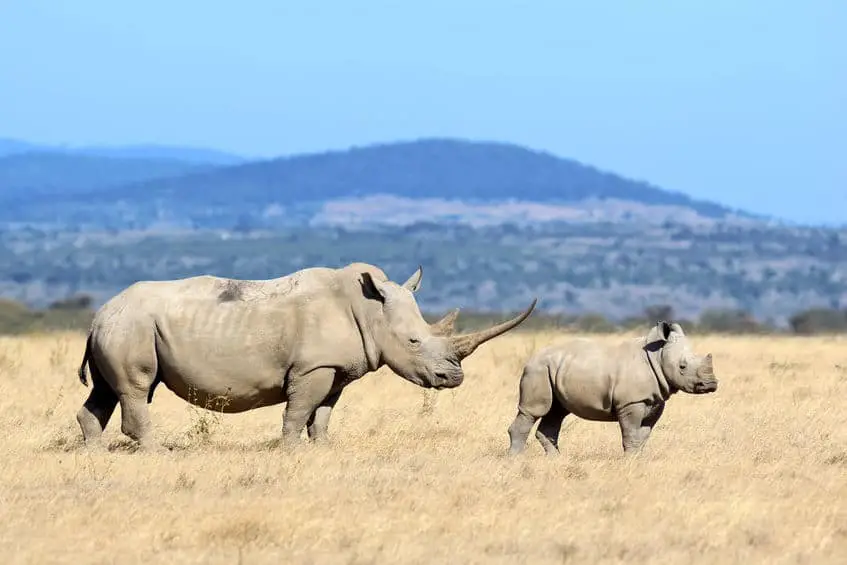
After all, what would a safari be without seeing and admiring the ‘Big 5’, South Africa’s heritage! We salute these non-profit organizations for their hard work and dedication and stand firmly with them against worldwide poaching of rhino. A few really good projects to name are: Save The Rhino Project Rhino Wildlife ACT Fund Tac Trac Protrack Rhino Task is dedicated to the perseverance of all animals and would love for future generations to have the opportunity to see rhino in their natural habitat and not have to bear witness to their extinction. These organizations are non-profitable and are always looking for individuals to actively get involved through volunteer work or by donating funds to their project. White Rhino are second to the African Elephant in terms of land mammal size and are the least endangered of the rhino species.There are several Anti-Rhino Poaching projects that are dedicated to the preservation of Rhino in Southern Africa. White Rhino are generally found in groups but are territorial so the adult bulls are solitary and associate only with females in oestrus. You will find their heads lowered most of the day whilst they graze on ground vegetation. They have a bigger head, due to the muscles that support their neck.

Black rhino are most active at night when most of their foraging and drinking is done.We identify 'White Rhino' again not by their color but rather by their long necks and wide squared mouths. A mother however will not hesitate to charge anything that she considers a threat to her calf and can reach a top speed of 55km/hour. They have a reputation to be more aggressive and unpredictable than white rhino who generally only attack when threatened. Black Rhino are likely to be solitary and shy, keeping to thicker bushy areas. They are ‘browsers’ so branches of trees and shrubs are their preferred choice of meal. Black rhino have poor eyesight but a very good sense of smell and hearing. We can identify them by their short necks and hooked lips. The name ‘Black Rhino’ is deceiving as they are not black in color but rather grey. Rhino use their horns for self-defense and to attack opponents or predators which is critical to their survival.Rhino are fierce creatures, with white rhino growing up to 1.8m and weighing over two tons and Black Rhino growing up to 1.6m and weighing up to 1.4 tons. It is believed by certain cultures that Rhino horn is beneficial in curing cancer and is thought to be an aphrodisiac.

These beautiful creatures are poached of their unique horn and then left to perish away in the cruelest way possible.These horns are sold illegally on the black market for a number of uses. The number of rhino decreases rapidly, with South Africa having lost a total of 6100 known rhinos in the last 9 years with black rhino now being critically endangered. Currently, we have a population of approximately 1822 -2014 Black Rhino and 17 396 – 19 369 White Rhino.

South Africa is home to two species of Rhino. Today marks World Rhino Day! A day to show our love and appreciation for these extraordinary animals. Walking safaris in Africa provide the perfect way to view wildlife at eye level, Image Credit: Rhino Walking Safaris.


 0 kommentar(er)
0 kommentar(er)
